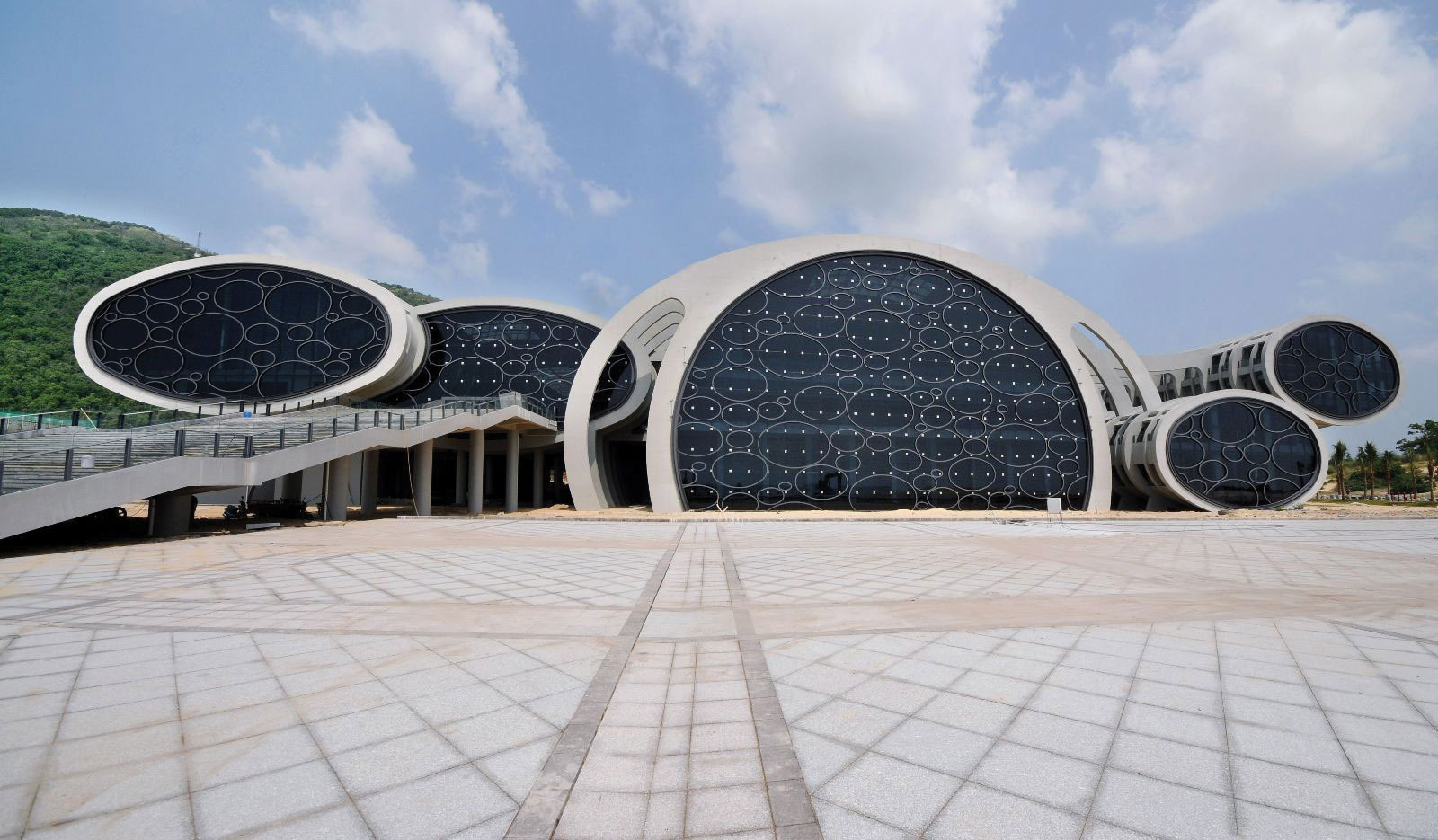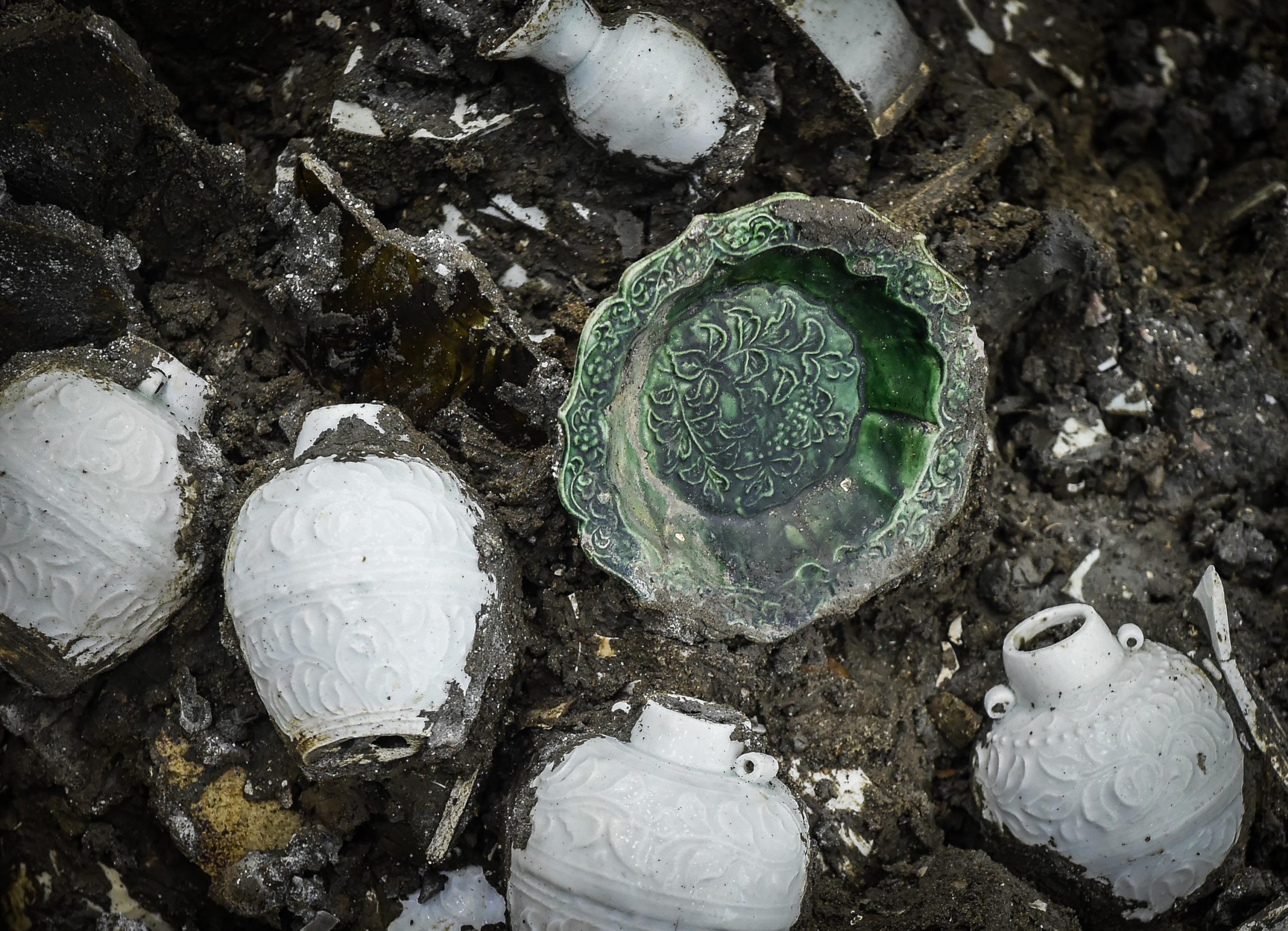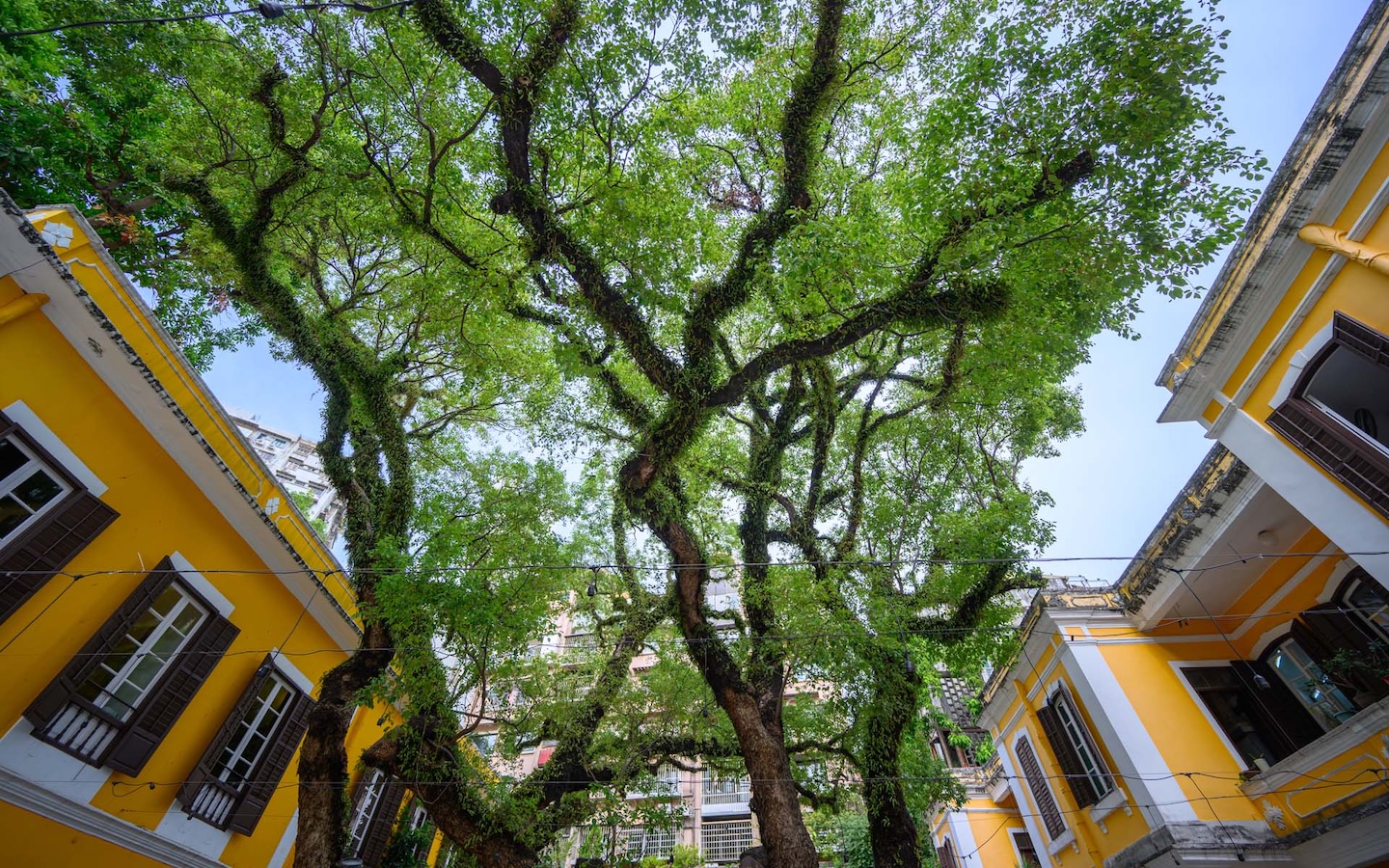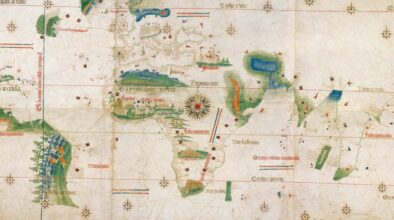Macao Museum exhibition spotlights landmark salvage.
The Macao Museum is showing an exhibition detailing the extraordinary story of how a fully loaded cargo junk of the Southern Song dynasty (1127–1279) was recovered from the bottom of the sea off the coast of Guangdong province, where it now sits on permanent display at the Maritime Silk Road Museum.
“Treasure from the Deep Sea – Exhibition of Underwater Archaeological Relics of the Nanhai No 1” opened 18 April and runs until 31 July.
The shipwreck, first discovered in 1987, remains the oldest and best‑preserved junk ever found in the South China Sea. It sank in the waters between the islands of Shangchuan and Xiachuan, 20 nautical miles from the port of Dongping, on its way from China to India or the Middle East along the Maritime Silk Road. The three‑masted Chinese junk measured 30.4 metres long with a capacity of around 200 tons, its hull loaded with tens of thousands of pieces of porcelain when it sank. Over the centuries, a thick layer of silt built up around the wreckage, helping to preserve the ship and its cargo.
In December 2007, after long and meticulous preparations, a 530‑ton barge transported the shipwreck, secured inside a watertight steel caisson, from the sea floor to Hailing Island, a journey lasting four days. From there it was moved to a new museum, built specially to house the ship at a cost of nearly RMB200 million (US$31 million), situated along one of the island’s many beaches. The intact salvage and excavation of the Nanhai (South China Sea) No 1 was the first operation of its kind in China’s history, and a landmark in underwater archaeology and marine engineering. Only a handful of shipwrecks worldwide have ever been salvaged while remaining intact.
Bringing Nanhai No 1 to Macao
The exhibition exploring this landmark project is one of many events and activities scheduled this year to celebrate the 20th anniversary of Macao Museum. At the same time, having some of the treasures of Nanhai No 1 in Macao for the exhibition also served to strengthen ties. “This exhibition is in accord with cultural exchanges between the countries and regions in the Belt and Road Initiative, and within the co‑operation framework between Guangdong, Hong Kong, and Macao,” said Loi Chi Pang, director of the museum.

A visit to the museum in Yangjiang, which houses the wreck and the many objects unearthed from it, inspired Loi: “I saw the whole ship inside. It had a big impact on me so I had the idea of this exhibition. Many months were necessary to prepare for such an exhibition, between 6 and 12 months. I spoke with my colleagues and the executive committee of the museum, who approved the idea.”
Throughout its history, Macao was an important port on the Maritime Silk Road, which connected China to trading partners in Southeast and South Asia, as well as the Middle East, Africa, and Europe.
“It was not an easy exhibition to arrange. The significance was in the recovery and archaeology, a first in China. Our mission was to explain that to the public, how this had been achieved. We did a lot of research,” said Loi.
“The intact salvage of Nanhai No 1 was an enormous feat of engineering and proved extremely difficult. It involved fighting against the elements and the mud surrounding the boat thick with the sediments coming back at the speed of 10cm a month, as well as the instability of the weather. The operation was followed closely at home and abroad.”
Macao Museum, through co‑operation with the Maritime Silk Road Museum, is now the first institution outside the mainland to hold such an exhibition focused on this landmark underwater archaeological achievement.
Southern Song turns to the seas
According to Loi, the Song dynasty, especially the Southern Song, was a turning point in China’s foreign trade. “The main reason was war. The traditional Silk Road went west from Xi’an, and through Xinjiang, and two routes north and south of the Tarim Basim to Central Asia. But the Song dynasty had already lost control of this area, and had no alternative but to turn to the seas of the south.

“So it looked to Japan and Korea and south towards Southeast Asia and, through the Straits of Malacca, to India and Africa. The Song built large ports in Quanzhou, Mingzhou [now Ningbo] and Guangzhou to serve these markets,” he explained. “Quanzhou became one of the world’s biggest ports, trading with more than 60 countries and regions, including Japan, Korea, Thailand, and Arabia.”
Macao Museum is now the first institution outside the mainland to hold such an exhibition focused on this underwater archaeological achievement.
Nanhai No 1 set off from Quanzhou, laden with porcelain, mainly from the five most prominent kilns of the dynasty: Jingdezhen (Jiangxi province), Longquan (Zhejiang), Yi, Dehua and Cizao (Fujian). After a stop in Guangzhou, it departed for its final destination – possibly in India or the Middle East – only to sink in the nearby South China Sea, still within sight of shore. Experts believe the ship likely went down in a storm or capsized due to excess weight.
Initially estimated to carry between 60,000 and 80,000 items, experts now believe the total could be as high as 100,000. Astonishingly, when divers located the ship, they found the porcelain to be in perfect condition, many pieces still secured by ropes. On the underside of the porcelain, researchers found writing and serial numbers, allowing them to trace where the pieces came from. In the upper part of the shipwreck, they discovered a vast number of of pans and nails, and excavations have since turned up hundreds of gold, silver and copper sets, and around 17,000 copper coins.
Other items found onboard, including a number of gold items and the skulls of two snakes, indicate the owner of the Chinese‑style ship was likely Indian or Middle Eastern.
Loi said that the shipwreck illustrates the scale and model of trade during the Southern Song and how the Maritime Silk Road worked. “It opens a window on the exploration of the Maritime Silk Road.”
Building an expansive exhibition
More than simply presenting some of the many treasures recovered from the ship, Macao Museum wants visitors to appreciate the decade‑long process to recover Nanhai No 1 intact. “We want people to see the story behind the exhibition,” said Loi, a goal that took time and money.

“We spent over a year preparing it. There is much more material than we can show in our exhibition rooms. Hence we created a QR code that people can scan to get a better understanding of the story of the story online. The organisation cost around MOP3 million (US$372,000), more than other exhibitions.”
Response has been excellent: in the first 10 days, 14,000 people came. Mainland visitors dominated the weekday crowds while more Macao people came on the weekends. “People from Guangdong knew about the shipwreck. Some from Heilongjiang province had never seen the sea. They were very excited.”
Visitors can see a model of the junk made by a top craftsmen in Macao. The original ship was built around 1216, a medium‑sized merchant vessel with three masts and the type of watertight bulkhead characteristic of a Fuchuan junk. While junks have been around since the third century AD, little is known about Chinese shipbuilding and navigation techniques during this important period in the country’s maritime history, making Nanhai No 1 an especially significant find.
The exhibition also includes examples of many kinds of porcelain that the junk was carrying, as well as some of the equipment used by divers and the archaeological team for this unique project.
Reclaiming a piece of maritime history
Raising an 800‑year‑old ship from the sea floor, intact, with nearly 200 tons of fragile cargo, was no mean feat. Excavations of the wreck remained limited for decades after its discovery, but in 2001, with funding and a team in place, the long process of recovery began. The dive team found that the shipwreck’s structure was complete and the wood in good condition, so it was decided that the whole ship would be recovered.
In November 2003, the Guangdong provincial government decided to build the Maritime Silk Road Museum in Yangjiang, as a permanent home for the shipwreck after its intact salvage.

In May 2007, a large floating rig with a powerful crane built in Shanghai at a cost of RMB600 million (US$93.51 million), then the largest of its kind in Asia, was ready. With it launched a barge costing RMB70 million ($10.91 million); it would house the caisson containing the shipwreck and take it on land.
At the site, the crane carefully lowered the steel caisson 24 metres below the surface, placing it alongside positioning piles, to surround the hull on five sides. The open bottom was then sunk into the surrounding mud using massive concrete weights. Workers then spent two months excavating the mud around the caisson to insert bottom‑supporting steel beams, completely encasing the sunken vessel.
Once secured, the sacrificial base beneath the beams was cut free and the watertight container – steal, ship, silt, and seawater dangerously close to the barge’s 5,000‑ton limit – was raised to the surface. After nine months of painstaking preparations, on 21 December, the final lift was completed in just a day and favourable weather conditions allowed the barge to begin the four‑day trip to shore.
From the beach where it landed, the caisson was then transported to the nearby museum by way of enormous marine airbags, along with wooden logs for protection, where it was finally placed in a massive pool‑type container. Known as the Crystal Palace, the container mimics the natural conditions that preserved Nanhai No 1 for so long while allowing archaeologists to continue the labour‑intensive work of unearthing thousands of objects from its hull. It also has offered visitors to the Maritime Silk Road Museum a literal window into the process, able to observe the ongoing excavation from windows on two sides of the pool.
Recovering the Nanhai No 1 marked the first major project undertaken by Chinese underwater archaeologists, a remarkable engineering feat that has not been repeated. “It was very difficult to do,” Loi explained, noting that the country has since adopted a different approach. “Now, the idea is to protect such cultural items and leave them where they are. Let us preserve them in their original place.”




